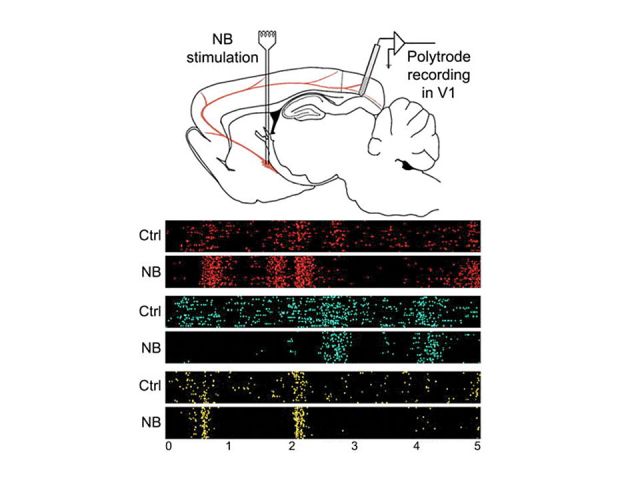
Neuromodulation of sensory processing and storage
A student sitting in a classroom will process the material in very different ways depending on whether they are highly engaged or daydreaming. How can the same sensory input lead to such different percepts?
The study of sensory coding in the neocortex often focuses on the fixed response properties (or “tuning”) of cortical neurons. However, there is substantial evidence that cortical responses can be dynamically shaped by top-down and neuromodulatory input.
My lab uses calcium imaging, electrophysiology, and optogenetics to investigate the role of neuromodulators (particularly acetylcholine and norepinephrine) in the processing and short-term maintenance of sensory input.